Pompano season means pompano rigs, which aren't just for pompano. True story
Since we’ve beaten this horse half to death in recent weeks, it’s time to move on from the pompano run, right?
Right?
Um, wrong.
But instead of pompano, let’s talk about the famous pompano rig.
A couple years back in this humble little corner, we talked about pompano rigs and how they’re not just for pompano. In theory they’re for pompano, but apparently most fish can’t read or … now get this … differentiate between baits stabbed onto a run-of-the-mill hook or those festooned to a pompano rig.
Go figure.
The latest testament came courtesy of (who else?) our weekly contributor Marco Pompano, who caught a pompano on his own brand of pomp rig and, after being left alone, quickly rang the phone to say, “You just missed it, I pulled in a 20-inch red.” Same bait, same rig.
ST. JOHNS Unified front on the way to help return St. Johns River to past glory | Fishing Roundup
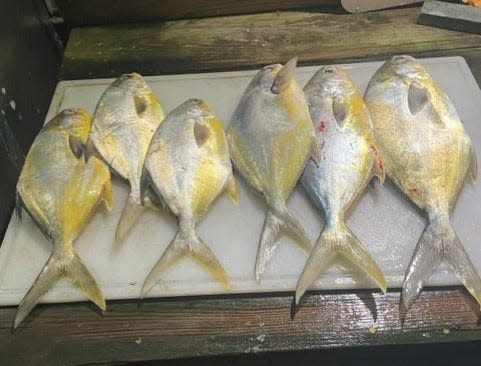
Generally speaking, a pompano rig is one that has a weight at the end of the line, with the hook or hooks above, separated by several inches and a whiff of promise. Among the local favorites are the Bruno and Mortician rigs produced by Chip Brundage, the Jacksonville-based “Sinker Guy” best known for his Sputnik sinkers.
“He has them measured out to the point where you’re staying away from the catfish and stingrays,” says Dustin Smith, of NSB Shark Hunters, who downsizes often to fish for bait. “Catfish and stingrays are bottom-feeders, so he designed it to keep the bait up off the ground, less likely to catch those two.”
Is there anywhere on Earth where bottom-feeders can get a table?
#osprey with a big early morning #breakfast of #pompano more here: https://t.co/RJWIvNBXtz #fishing #florida #birdphotography #birbs #birds pic.twitter.com/FMPH05OqeO
— Mark Smith Photography (@marktakesphoto) February 1, 2021
Turns out, there are many different rigs calling themselves pompano rigs. And unless you have multiple thumbs, you can fill that idle time between Jeopardy and Wheel of Fortune by making your own so-called pompano rigs that might just land you a redfish or something of equal quality.
Do a search for pompano rigs on your nearest supercomputer, and you’ll be amazed at the variety.
And then there’s the aforementioned Marco Pompano, who uses a rustic piece of equipment that looks like it might’ve been the prototype for Mother Maybelle Carter’s first autoharp. He generally prefers a naked rig with nothing but looped drops with hooks — three drops, in fact.
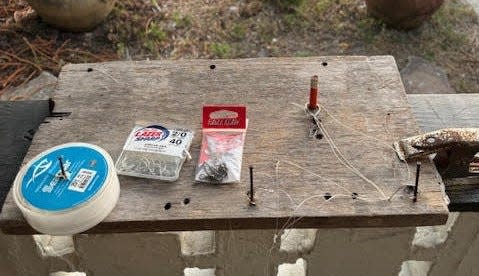
He'll occasionally use the small floats, but if he's adding anything, it's usually beads, and he tries to find beads to match the color of the tiny coquina shells you find on the beach.
"Pale, pastel ... beautifully colored little shells," Marco says. "I find the pompano bellies full of those little shells."
Bait-shop operators have bills and like to eat, so maybe you'll just buy your pompano rig. But if you're feeling industrious, do the research and you'll find a rig that really catches your eye and seems easy to build.
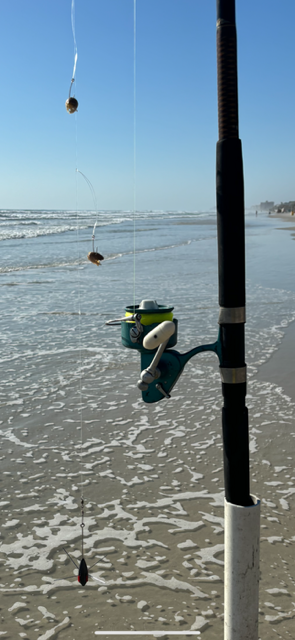
Along the way, you might even learn about something called snoods.
What’s snoods?
Not much, what snoods with you?
Sorry, couldn’t resist.
Halifax/Indian River
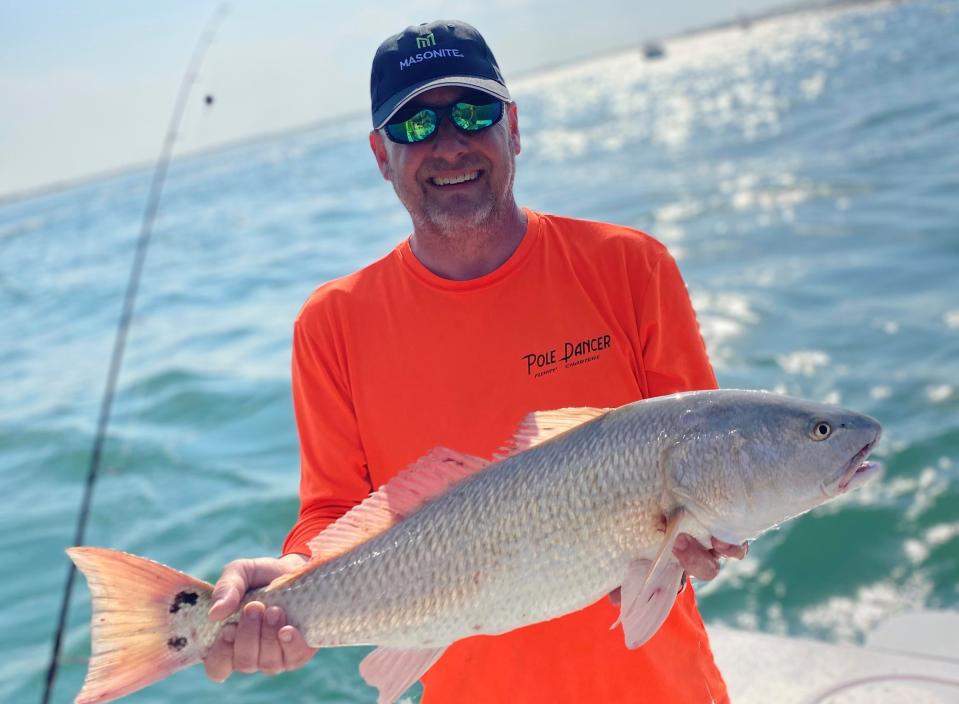
It’s the time of year when mangrove snapper start showing up in the intracoastal, prepping for their starring role in summertime.
“But you’re gonna have to weed through a bunch of small ones to find some keepers,” says Capt. Billy Pettigrew (RedfishTails.com). “Go to your favorite snapper hole and they’re there.”
As the water cleans up, look for reds and snook chasing baitfish and shrimp on shallower water.
Along with mangroves and black drum, Ike Leary says trout and bluefish are being pulled to the planks at his fishing pier alongside the Granada Bridge in Ormond Beach.
Capt. Jeff Patterson (Pole Dancer) has been putting clients on slot and over-slot reds at Ponce Inlet. Big blues are still around, he says, along with snook and jacks, with some tarpon starting to snoop around.
"There's been big schools of bait off the beach and a bunch of Spanish mackerel and bonito on them," he adds.
Surf
After a couple days of relative calm Wednesday and Thursday, it looks like hard work again along the shoreline for several days. The east winds will hang around into next week, and then they’ll do little more than tilt their heads and come at us from the east-southeast and southeast.
But there’s no wind under the water, so assume the fish are out there. Along with the migrating pompano, there still seems to be plenty of whiting along with some high-end catches like reds and sheepshead.
St. Johns
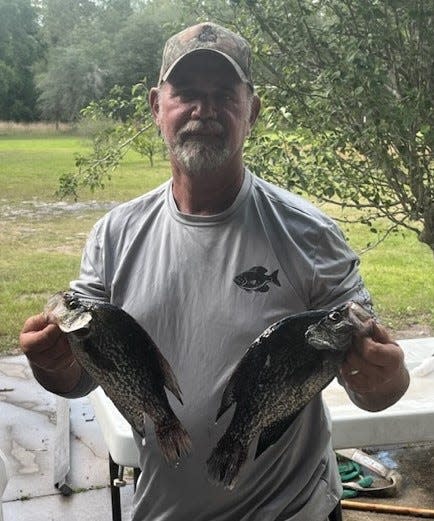
Pitch live crickets or worms against the bank, jig the pads, or go to deeper water for your jigging in various depths.
Practically everywhere you go, there’s a chance of getting into the variety of panfish that makes the St. Johns such a go-to place for anglers all over.
“We’re seeing bluegill, shellcracker and even some warmouth,” says Capt. Bryn Adams (Highland Park Fish Camp), who says if you prefer artificials, you should try the classic Beetle Spin.
Don McCormick says he’s finding specks in the lily pads in Lake Woodruff, where they’re chasing menhaden. He likes to use a 16th-ounce jig. He and neighbor Gary Warren put 22 specks in the cooler on a midweek outing while tossing back several of 2-plus pounds.
HSFC
The Halifax Sport Fishing Club will be hosting its annual Special Needs Fishing Tournament May 4 at the pier under the Dunlawton Bridge in Port Orange.
Registration is that morning from 8:30 to 9, with fishing from 9 to noon. Rods and bait are provided, along with lunch and drinks. Club members will be on hand to help with the fishing.
No charge, by the way. More info: Helen Klenk at 386.547.1813, or email the club: Publicity@HSFC.com.
More info always available on the website.
Hook, line and clicker: Send us your fish pics
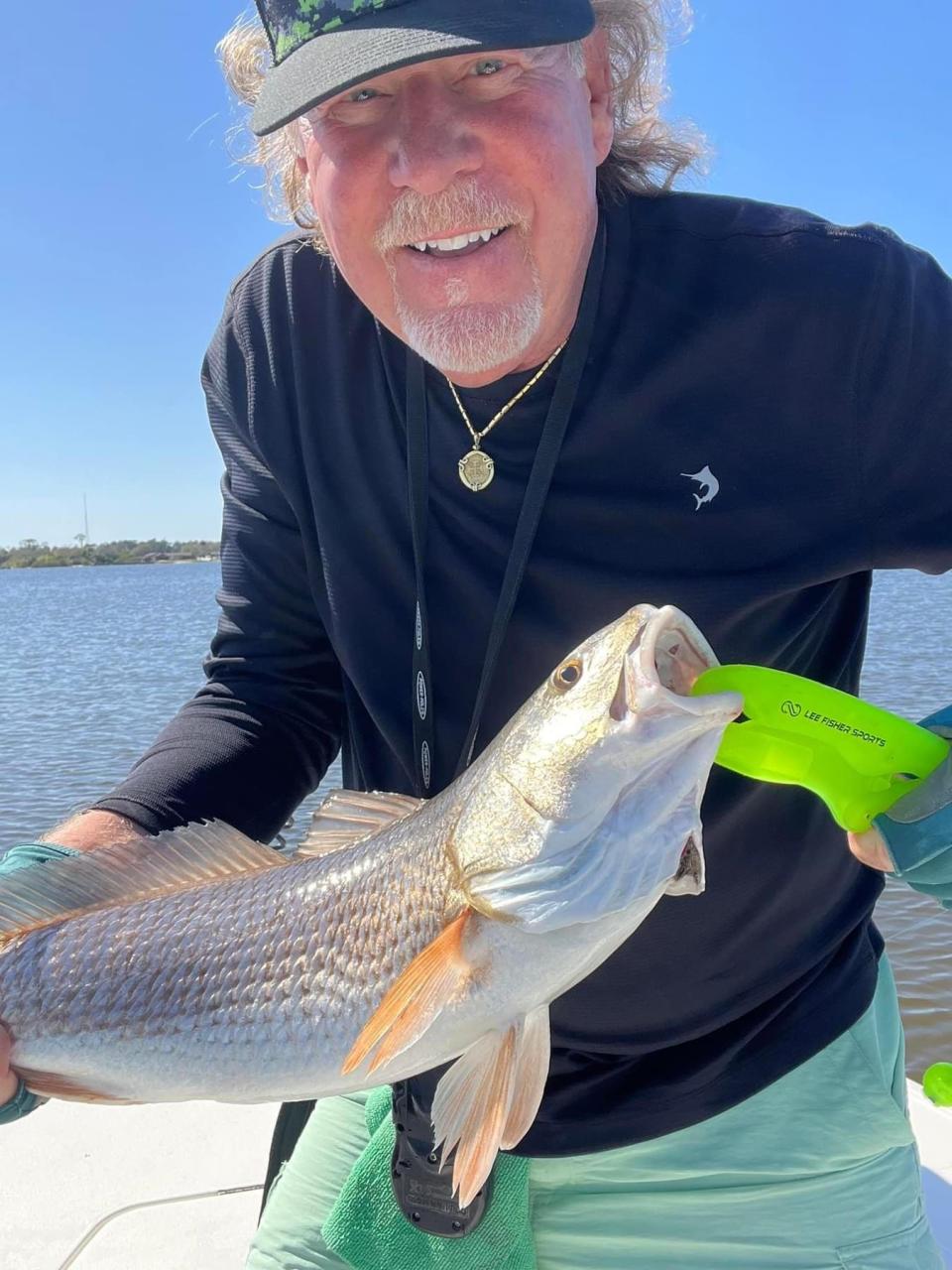
We want to see your most recent catch. Email your fish photos to ken.willis@news-jrnl.com.
Please include first and last name of angler(s), as well as type of fish (we're occasionally stumped). All are included with our online fishing report, and some occasionally make the print edition.
Do I need a fishing license?
You can find all the license info, including exemptions, on Florida's Fish and Wildlife Commission website: MyFWC.com. But the basics are: No: If you're 65 or older, 15 or younger, you don't need a license. “Probably” Not: If you're fishing with a licensed guide or charter boat, both of which often purchase commercial licenses that cover their customers. Yes: Most everyone else, including visitors from other states. Yes: Even if you're a shore-based angler (shoreline, dock, pier, bridge, etc.), and even if fishing with a shore-based guide. However: The shore-based license is free . . . But: You still need to register for that free license.
Where do I get a license and what does it cost?
Many bait shops sell licenses, as do the bigger retailers (Bass, Dick's, Walmart, etc.). Florida's FWC uses a third-party site for buying or renewing fishing licenses: GoOutdoorsFlorida.com. The cost: $17 for an annual license. Don't forget: Whether you're fishing fresh or saltwater, you need the specific license. Freshwater and saltwater licenses are both $17 annually.
I’m here on vacation, do I need a license?
Yes you do, and they're also available at GoOutdoorsFlorida.com or certain bait shops and big retailers. Cost: $17 for three days, $30 for seven days, $47 for a year. Also: Non-residents need to purchase that license even if they're just fishing from shoreline or shore-based structures. (Florida residents need that license, too, but they're free.)
This article originally appeared on The Daytona Beach News-Journal: Pompano rigs aren't just for pompano, you know | Daytona Fishing Roundup

